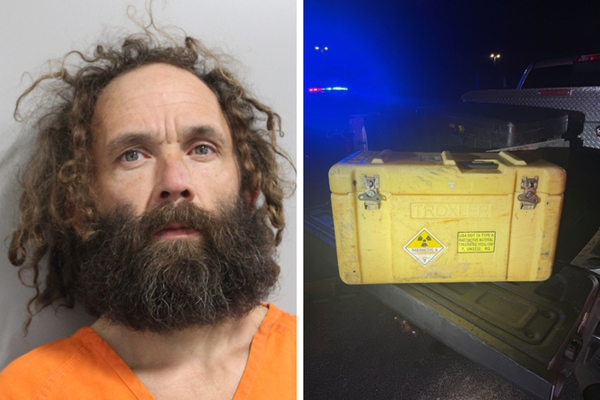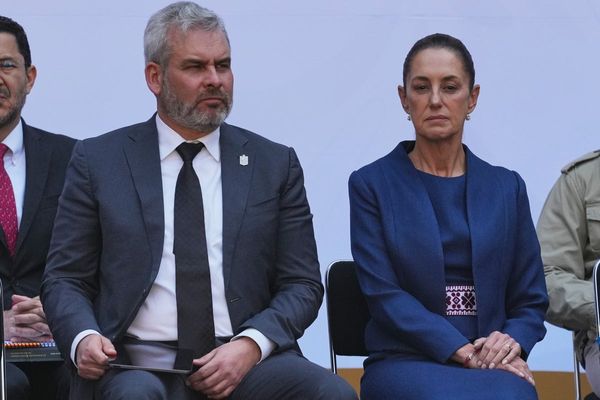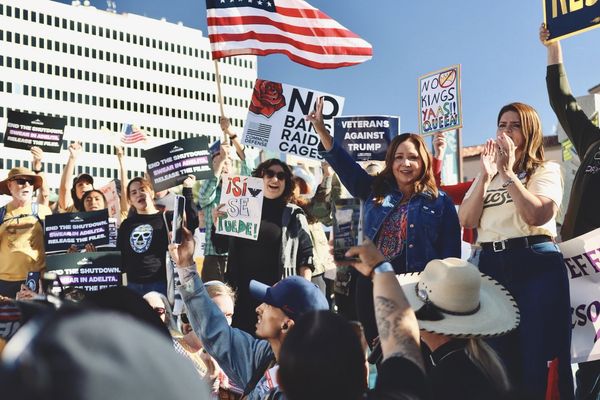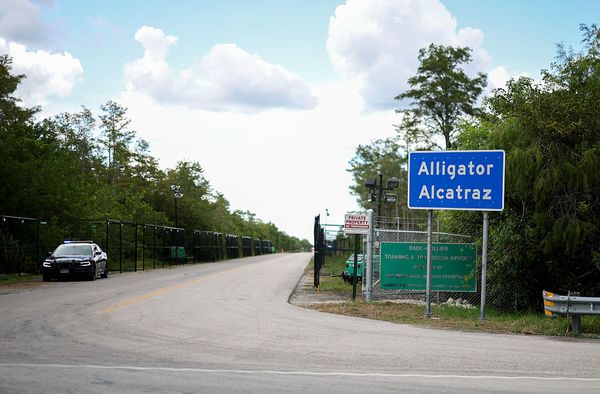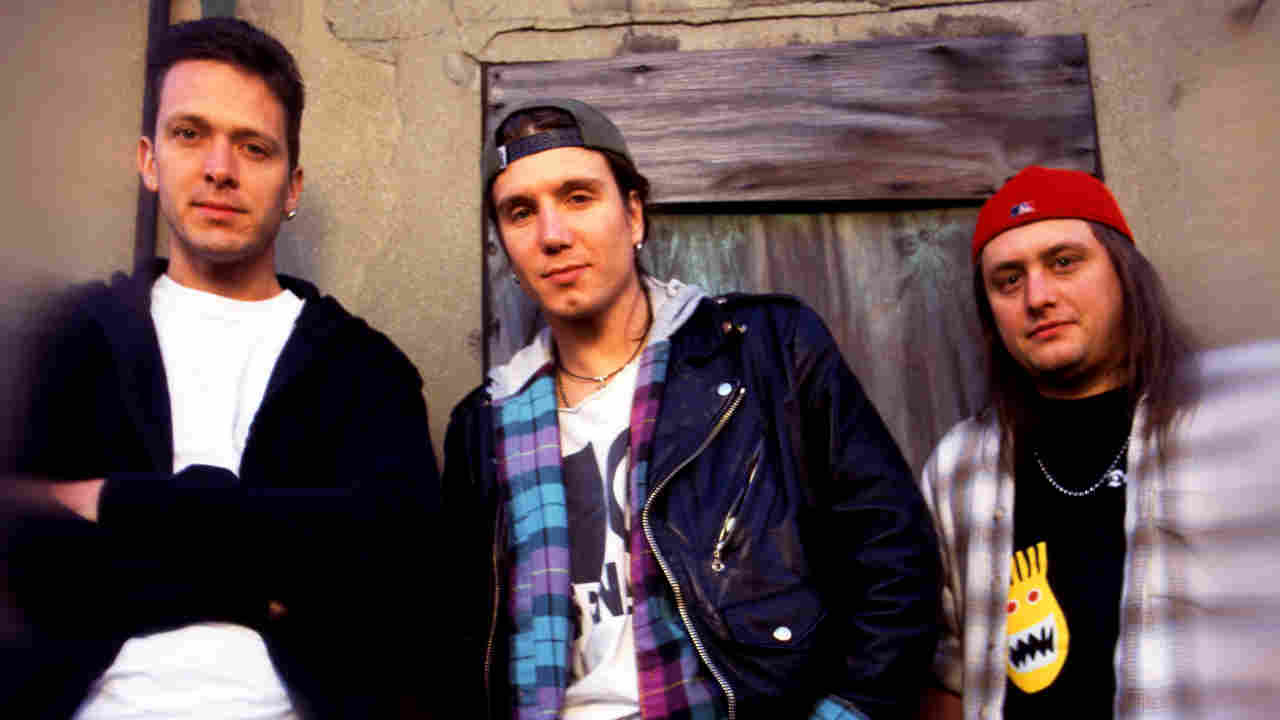
Goo Goo Dolls were on a deserted island in the middle of a shark-infested sea when they got the call that changed their lives. Granted, it wasn’t a real island. This was a pile of sand with a chintzy fake palm tree planted in it, located in the middle of a studio. And the sharks? They were guys in black suits with fins on their backs.
This unlikely set up was the video shoot for Only One, the first single from the Buffalo, New York trio’s fifth album, A Boy Named Goo. This was 1995 and the Goo Goo Dolls had been around for nearly 10 years at this point, having evolved from a scrappy punk band into something more grown-up and anthemic. But they were still chasing the crossover song that would introduce them to a mainstream audience and kick things to the next level. The scuffed but sparkling Only One stood as good a chance as anything of doing it. And then something unexpected happened.
“We were literally shooting this video and somebody ran into the studio and said: ‘KROQ, the biggest rock station in Los Angeles, has added the song Name to their playlist,’” remembers Goo Goo Dolls singer and guitarist John Rzeznik. “When they added you, every station in the country added you.”
Nobody saw this one coming. Name was a bittersweet semi-ballad positioned midway through the album. A great track, for sure. But a hit single? Apparently so, if the programmers at KROQ were to be believed. And so it proved.
“Name took off and brought everything along with it,” says bassist and co-vocalist Robby Takac. “Suddenly everything got a little more real.”
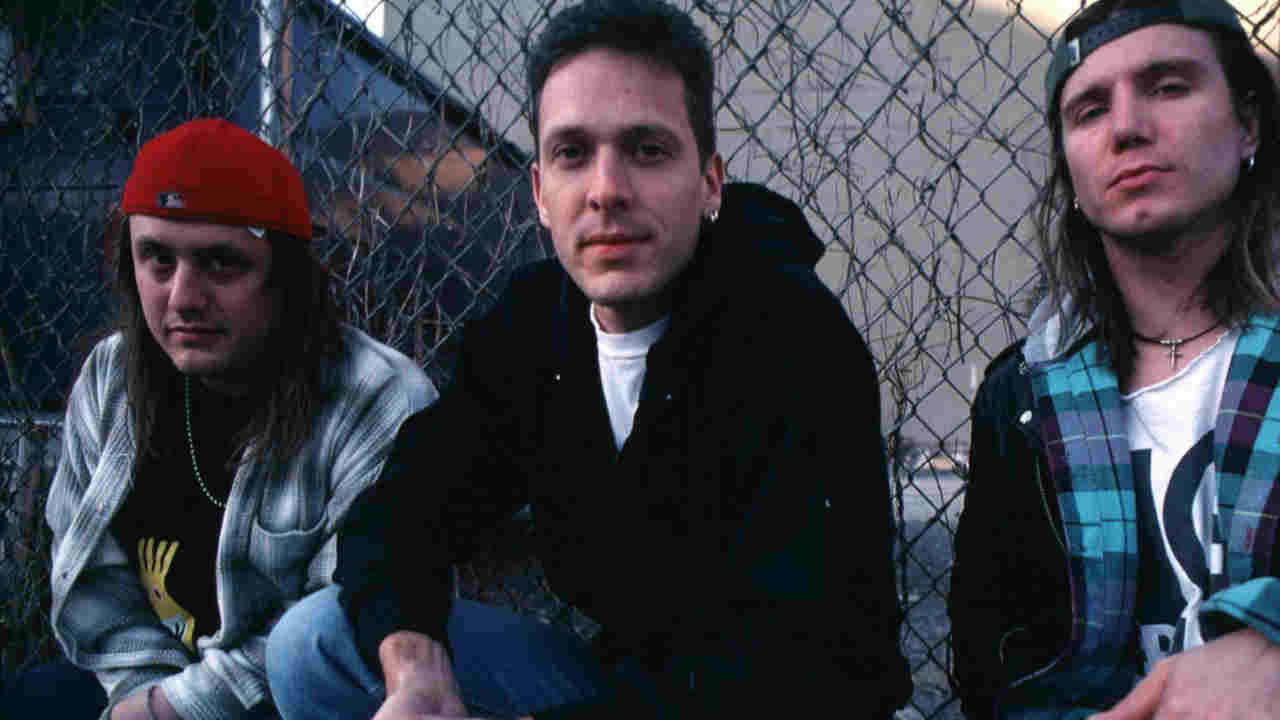
The Goo Goo Dolls that released A Boy Named Goo in March ’95 were a long way from the trio that formed in Buffalo in ’86. Back then Takac, Rzeznik and drummer George Tutuska were a bunch of unruly street rats who’d graduated from Kiss and Cheap Trick to Hüsker Dü and The Replacements.
“We were just a bunch of kids having fun,” says Takac, who was the band’s main vocalist on their first three albums. “It was pretty much a drunken brawl.”
Over the next few years they began to smooth out their ragged, drunken punk-rock edge, and released a string of albums that were increasingly less ragged and marginally less drunken. Their fourth record, 1993’s Superstar Car Wash, was the one that really signalled what was to come. As well as being their first for major label Warners, it showcased the Goo Goo Dolls as the tight, melodic rock geniuses they always were under the ramshackle 100mph thrashings. It also saw the division of vocal labour split equally between Rzeznik and Takac for the first time.
“That album was a real leap,” Rzeznik says of Superstar Car Wash. “But the thought of becoming these huge rock stars just never seemed to be on the cards for us. We were not in the mainstream of music. We were just doing our own thing.”
Rzeznik was sitting on his couch with his acoustic guitar when he came up with the bones of the song that would transform the Goo Goo Dolls’ fortunes. He’d been trying to work out the guitar’s tuning when he began playing the chord sequence that formed the basis of Name. “A pure accident,” he says now.
The song’s lyrics were inspired by his friendship with Kennedy, now a provocative libertarian political commentator but back then a hip and buzzy MTV VJ.
“I used to ride down to New York City on the train and I would see her, and we’d roam around the Lower East Side of Manhattan and eat at a Ukrainian restaurant and just hang out. I’d be lying if I told you I did not have a crush on her, but I was married and I very much believed in that. But I was inspired by her, because she was this fearless young woman, a total smartass about everything, and I had never met anyone like that before. Then she wound up growing up to be a Republican.”
Name was an unusual track for the Goo Goo Dolls, although not unprecedented. “Acoustic songs were always part of our vocabulary, but it was always the oddball part,” says Takac. “But when we were doing the demos, we could feel something special about Name. We just didn’t know how it would all go off.”
There was an angsty streak beneath the surface of many of the Goo Goo Dolls’ songs, particularly Rzeznik’s. ‘I don’t think I’ll make it on my own,’ he sang on Long Way Down, the album’s eventual opening track. ‘I don’t want to live in here alone.’ “There’s always a dark corner in my mind, and I go there sometimes,” he says now. “I’ve had depression my entire life, and you draw from those dark places. Sometimes it’s cathartic, sometimes it drives you deeper into it.”

The band headed across New York state to BearTracks Studios in the town of Suffern, just outside Woodstock, to record the album with producer Lou Giordano. They booked themselves into the cheapest motels, and Rzeznik remembers buying recording tape himself because it was half the price of the tape the studio provided. Still, there was enough money left to have a good time.
“At that point in our life the party never stopped,” says Takac. “We were still in our late twenties. We were trying to be responsible, but it usually degenerated into a drunken brawl by the end of the night.”
The finished record sounded great: still recognisable as the Goo Goo Dolls, but more confident than anything they’d done before and gleaming with just the right amount of polish. Rzeznik’s Long Way Down, Flat Top and Only One were perfectly crafted 90s rock anthems shot through with blue-collar authenticity. Takac brought a little of the old raucousness to Burnin’ Up, Impersonality and Somethin’ Bad. Then there was Name, sitting gracefully yet innocuously in the middle of the album.
There was just one sour note. Album sessions brought tensions between drummer George Tutuska and his bandmates to the surface. “I think George was a little resistant to what we wanted to do, and it slowed the process an awful lot,” says Takac.
Tutuska finished the record, but by the time A Boy Named Goo was released on March 14, 1995, he was no longer a member of the Goo Goo Dolls, his place taken by Mike Malinin.
Name wasn’t the first single to be released from A Boy Named Goo. That was Only One, the track with the video on the fake desert island that finally got the band played on MTV’s influential alternative rock show 120 Minutes. It wasn’t even the second single – the breezy Flat Top had that honour.
Instead, Name was the album’s third single, but it was the important one. Released in September 1995, six months after the album came out, the backing of KROQ and pretty much every other radio station in America helped propel it up the chart to the nosebleed heights of No.5 on Billboard’s Hot 100.
Part of Name’s success was down to timing. In the wake of grunge, anything guitar-based and vaguely alternative was hot. Part of it was down to its universally relatable emotional undercurrent and sense of something unrequited. But mostly, as Takac puts it, it was because “John wrote a fucking amazing song”.
Helped by Name, A Boy Named Goo rose from nowhere to peak at No.27 in the US album chart – the first time the Goos had been in the Top 100, let alone the Top 30. There had been a minor controversy when Walmart deemed the album’s cover – featuring a photograph of a young boy topless and covered in goo – to be perverted and refused to stock it. At least until it became too big to ignore, at which point Walmart changed their minds. John Rzeznik had more pressing personal issues to worry about anyway.
“When Name became this massive mainstream hit I got a heavy dose of imposter syndrome,” he says. “It completely fucked up my mind, it really did. If this had been our first album, Robby and I would have been dead instantly. We would have taken every drug, every last drop of booze and just killed ourselves.”
There was backlash, too, from fans of the old, punk rock Goo Goos who didn’t like what their band had become. Some musicians from bands they’d previously considered friends were equally scathing .
“People fucking hate it when you succeed, and we had some of that,” says Rzeznik. “But I’d done that too. There were a couple of people in my life that did better than I did, and I was, like: ‘Fuck that guy.’”
But the punk flame still flickered, albeit in unexpected ways. When the producers of glossy teen soap Beverley Hills 90210 invited the Goo Goo Dolls to appear on the show to perform Name, they accepted.
“Yeah, it was kind of strange,” Rzeznik says of the offer. “But by that point Robby and I had taken so much shit from our peers that we just thought: ‘Fuck you guys, we’re gonna do whatever we want to do.’”
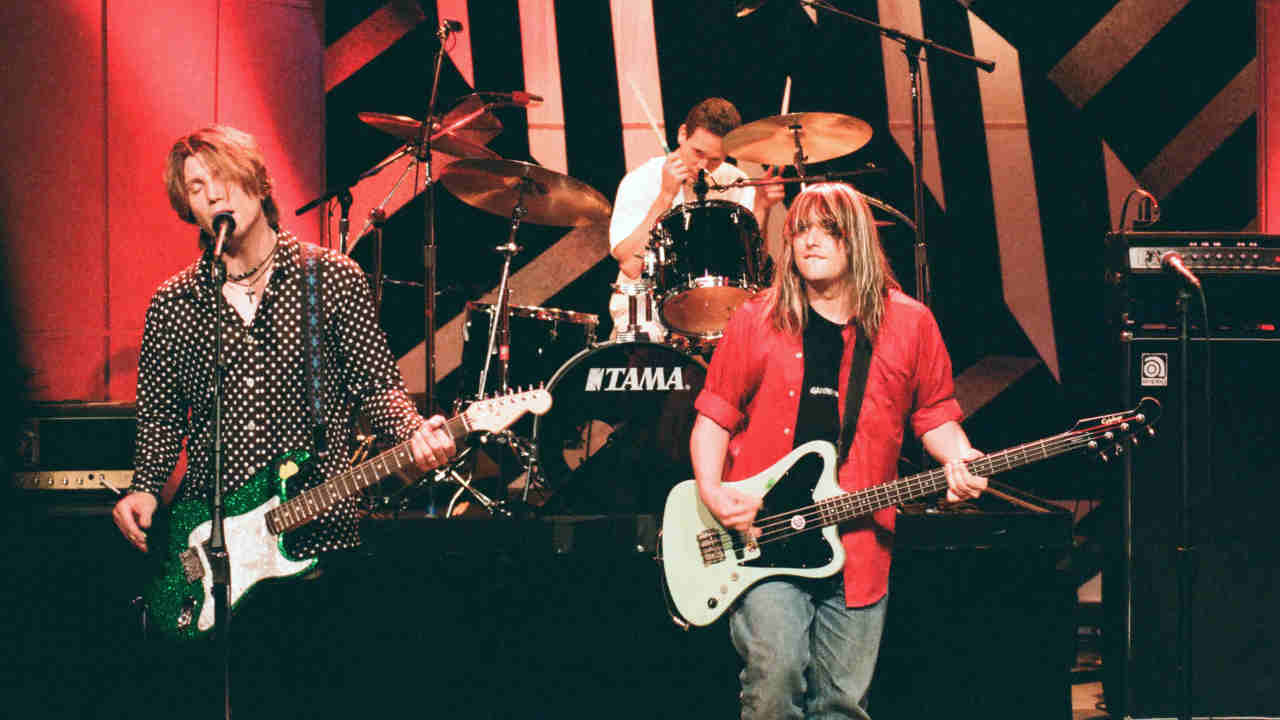
Goo Goo Dolls managed to cling on to the bucking bronco that was their career post-Name. By the end of 1996, A Boy Named Goo had sold more than two million copies, positioning them solidly in the centre of things. Where once they’d aspired to become as successful as Hüsker Dü or The Replacements, now the competition were the platinum-plated likes of Bush, Live and, yes, Matchbox Twenty. This was an overnight success story a decade in the making.
Things would get even crazier a couple of years later. Their 1998 album Dizzy Up The Girl took everything they’d road-tested on A Boy Named Goo and fine-tuned it. That record was home to Iris, an inarguably perfect alt.rock ballad that would go on to soundtrack births, marriages, divorces and deaths and every event in between. But without A Boy Named Goo’s centrepiece hit, the latter wouldn’t be the song it was. Name walked so that Iris could run.
The Goo Goo Dolls themselves were changed by A Boy Named Goo. On one hand they were established as one of the breakout US rock bands of the second half of the 90s. On the other, Rzeznik in particular struggled with some of the issues that had been brewing before the album and were brought to a head by its success.
“At that point I was in the early phases of my substance-abuse problem,” says Rzeznik. “The thing about alcohol is that it really works until it doesn’t, and then it becomes a problem.”
He finally got sober in the mid-2010s. Today both he and Takac have the clarity to appreciate A Boy Named Goo for what it is: a great record, for sure, but a turning point for the band that made it.
“When Dizzy Up The Girl happened we had a clue what was happening,” says Takac. “But with A Boy Named Goo everything was still a surprise.”
“I think the songwriting on Superstar Car Wash is better, but that’s personal taste,” says Rzeznik. “A Boy Named Goo had to happen to get us to where we are today.”
The vinyl reissue of A Boy Named Goo is out now via Warners

